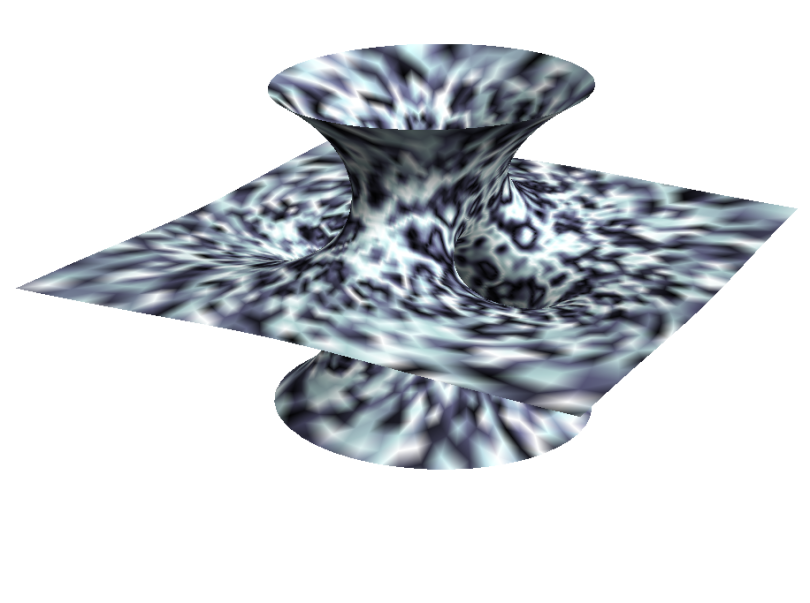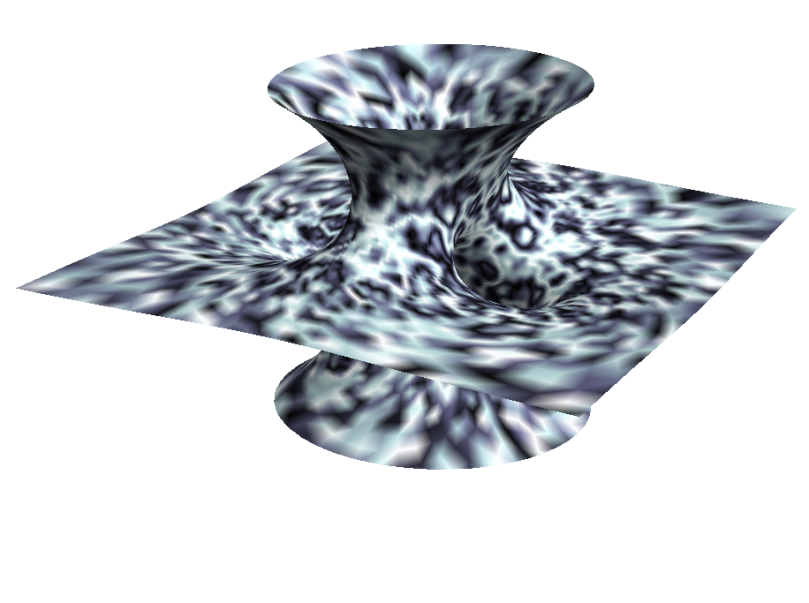The other day, I finally managed to simplify Alfred Gray’s parametric equations for Costa’s minimal surface. I might edit this post later, with details on how to manipulate the Weierstrass elliptic functions that show up in the equations, but enjoy these for now:
Here, and
are respectively the Weierstrass elliptic function, its derivative, and the Weierstrass zeta function, with invariants
and
, and
and
are the usual beta and gamma functions. The invariants are the ones corresponding to the semi-periods
and
. The parameter ranges are
and
.
I was very delighted at my result, that I decided to make a stylized plot of the surface in Mathematica, using Perlin’s simplex noise for the coloring:

